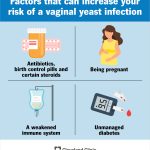As a dog owner, there’s nothing more worrisome than seeing your furry friend scratching and licking at their skin with no apparent reason. It’s not just an itch – it’s a cry for help from your pup’s body.
Canine Yeast Infection Medication: Effective Treatment Options
Yeast infections in dogs are more common than you think, and they can be painful, uncomfortable, and even lead to skin problems if left untreated. But don’t worry – we’ve got you covered! In this blog post, we’ll delve into the world of canine yeast infection medication and explore the most effective treatment options for your beloved pet.
The Importance of Addressing Canine Yeast Infections
Yeast infections, also known as malassezia dermatitis or seborrhea, are caused by an overgrowth of yeast in a dog’s skin. This can lead to symptoms such as:
- Skin lesions and rashes
- Foul odor
- Itching and scratching
- Dull coat and excessive shedding
The key is early detection. The longer you wait to treat the infection, the more likely it will spread and cause further complications. As a responsible dog owner, it’s crucial to recognize the signs and symptoms of canine yeast infections and seek veterinary care when necessary.
Treating Canine Yeast Infections: A Multifaceted Approach
While there are various treatment options available for canine yeast infections, not all may be suitable for your dog. That’s why it’s essential to consult with a veterinarian to determine the best course of action. In our next section, we’ll explore the different types of medications and supplements that can help alleviate symptoms and promote healing.
In our previous section, we explored the importance of addressing canine yeast infections and the key signs and symptoms to look out for. Now, let’s dive deeper into the treatment options available for your furry friend.
Treatment Options: Medications and Supplements
When it comes to treating canine yeast infections, a multifaceted approach is often the most effective way to promote healing and alleviate symptoms. Here are some of the most common medications and supplements used to treat yeast infections in dogs:
- Topical antifungal creams or shampoos: These can help reduce the growth of yeast on your dog’s skin, promoting a healthy environment for their coat and overall well-being.
- Ketoconazole: This antifungal medication is often prescribed to treat canine yeast infections. It comes in both oral and topical forms, making it easy to administer as part of a comprehensive treatment plan.
- Medicated shampoos: Certain shampoos can help soothe and calm the skin while also targeting the underlying yeast infection.
- Dietary changes: In some cases, dietary adjustments may be necessary to address the root cause of the yeast infection. A balanced diet that includes omega-3 fatty acids and antioxidants can help support your dog’s overall health and reduce inflammation.
It’s essential to remember that every dog is unique, and what works for one pup may not work for another. Your veterinarian will work with you to develop a personalized treatment plan based on the severity of the infection, your dog’s age, size, and overall health, as well as any underlying medical conditions.
Combining Medications and Supplements
In many cases, combining different medications and supplements can be more effective than using a single treatment option. For example:
- Using both topical and oral antifungal medications to target the yeast infection from multiple angles.
- Combining ketoconazole with a medicated shampoo for enhanced results.
Remember, it’s crucial to consult with your veterinarian before starting any new treatments or supplements. They will help you determine the best course of action and ensure that your dog receives the most effective treatment possible.
The Importance of Follow-Up Care
Treating canine yeast infections requires patience, persistence, and regular follow-up care. It’s essential to monitor your dog’s progress and make any necessary adjustments to their treatment plan. This may involve:
- Regular check-ups with your veterinarian to track the infection’s progression.
- Making changes to your dog’s diet or environment to prevent future infections.
In our next section, we’ll explore ways to prevent canine yeast infections from occurring in the first place. Stay tuned!
Get Expert Guidance on Canine Yeast Infection Medication
Have questions about treating yeast infections in dogs? Our experts are here to help.
Start chatIn our previous sections, we’ve explored the importance of addressing canine yeast infections and the different treatment options available to help alleviate symptoms and promote healing.
Summary of Key Points
We’ve discussed how yeast infections in dogs can cause a range of uncomfortable symptoms, from skin lesions and rashes to foul odor and excessive shedding. We’ve also emphasized the importance of early detection and seeking veterinary care when necessary.
In terms of treatment options, we’ve touched on the various medications and supplements that can help treat canine yeast infections. From antifungal creams and shampoos to oral medications and dietary changes, there are many effective ways to combat this common condition.
Final Insights
The key takeaway from our discussion is that canine yeast infections require a comprehensive approach that addresses the underlying causes of the infection. This may involve a combination of medication, lifestyle changes, and ongoing veterinary care.
As a dog owner, it’s essential to be proactive in monitoring your pet’s health and seeking professional advice if you suspect they may have a yeast infection. By working closely with your veterinarian and staying committed to treatment, you can help your furry friend feel comfortable and confident once again.
A Call to Action
As we conclude our exploration of canine yeast infections, remember that every dog is unique and requires personalized care. Don’t hesitate to reach out to a veterinarian if you suspect your pet may have a yeast infection or if you’re unsure about the best course of treatment.
By prioritizing your dog’s health and seeking expert advice when needed, you can help prevent the discomfort and distress associated with canine yeast infections. Take control of your dog’s well-being today and give them the gift of a happy, healthy life.
Red Bumps on Head of Penis: Are you experiencing red bumps on the head of your penis? This could be a sign of an underlying issue, and it’s crucial to get to the bottom of it. Click here to learn more about what might be causing these unsightly blemishes.
What is Average Pulse Rate by Age?: Ever wondered how your pulse rate compares to others at different stages of life? This article provides a comprehensive breakdown of average pulse rates by age, helping you better understand your own cardiovascular health. Check it out!



